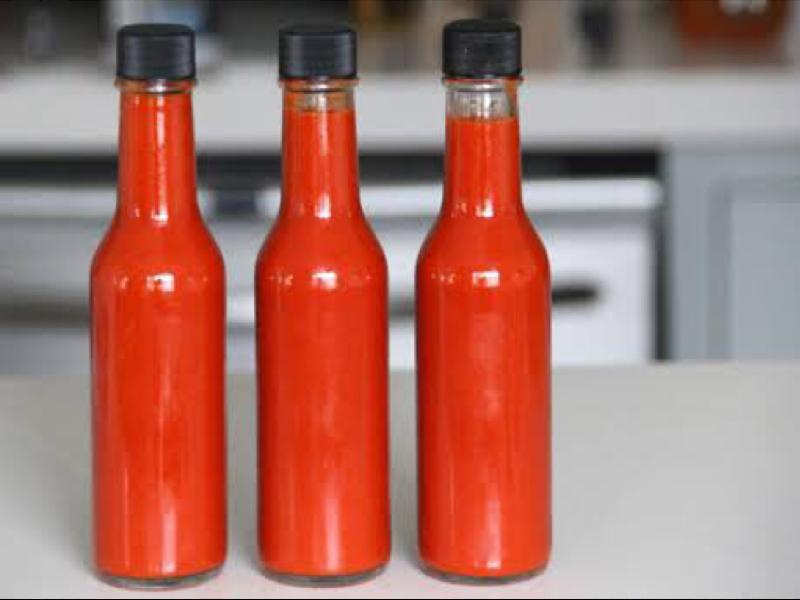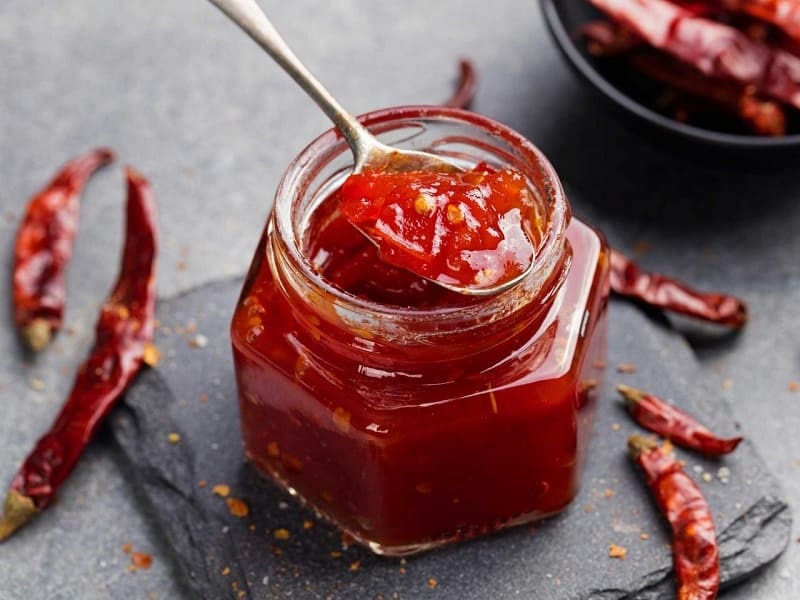The Fiery World of Hot Sauce: A Spicy Culinary Trend
Introduction:
Hot sauce, a condiment revered by chili lovers around the globe, has evolved from being a mere accompaniment to becoming a cultural phenomenon. Its popularity has skyrocketed in recent years, with enthusiasts seeking out new and innovative flavors to ignite their taste buds. This article explores the history, types, health benefits, and business behind the scorching hot sauce industry.
1. A Spicy Heritage:
Hot sauce has a rich history dating back thousands of years, with its origins traced to ancient civilizations such as the Mayans and Aztecs. These early hot sauce pioneers used chili peppers to infuse food with heat and flavor, creating the foundation for the condiment we know today.
2. The Heat Scale:
Hot sauces come in various heat levels, determined by the Scoville scale. This measurement system classifies the capsaicin content in chili peppers, with the legendary Carolina Reaper currently holding the title as the hottest pepper in the world. From mild and tangy to mouth-burning and tear-inducing, hot sauces cater to a wide range of preferences and tolerance levels.
3. Types of Hot Sauce:
Hot sauces are not uniformly created; instead, they vary in ingredients, flavors, and regional specialties:
a. Traditional Hot Sauce: The original hot sauce typically includes chili peppers, vinegar, and salt. Tabasco, a Louisiana-style hot sauce brand, showcases this classic combination.
b. Louisiana Style: Inspired by Cajun and Creole cuisines, Louisiana style hot sauces often feature a broader range of spices, including garlic, cayenne pepper, and paprika.
c. Mexican Hot Sauce: These sauces emphasize the flavors of specific chili peppers like jalapeno, habanero, or serrano. They are often paired with popular Mexican dishes such as tacos, enchiladas, and burritos.

d. Asian Hot Sauce: Countries like Thailand and Vietnam produce hot sauces that blend chili peppers with ingredients like fish sauce, garlic, sugar, and lime juice, creating a unique balance of sweet, sour, and spicy flavors.
4. The Health Benefits:
Beyond adding flavor and heat to dishes, hot sauce offers several health benefits:
a. Boosts Metabolism: Hot sauce contains capsaicin, a compound known to increase metabolism and aid in weight loss.
b. Rich in Vitamins: Chili peppers are a valuable source of vitamins like vitamin C, A, and K, as well as minerals such as potassium and magnesium.
c. Pain Relief: Capsaicin has been found to alleviate pain by triggering the release of endorphins in the body.
d. Heart Healthy: Research suggests that capsaicin may help lower blood pressure and reduce bad cholesterol levels.
5. The Hot Sauce Business:
The hot sauce industry has experienced significant growth, driven by the increasing demand from consumers seeking more diverse and unique flavors. Several factors contribute to the success of hot sauce businesses:
a. Flavor Innovation: The success of hot sauce brands often hinges on their ability to experiment with new and interesting flavor combinations, attracting consumers’ attention and loyalty.
b. Branding and Packaging: With an abundance of choices available, effective branding and eye-catching packaging play a crucial role in distinguishing one hot sauce from another.
c. Market Expansion: Hot sauce now extends beyond traditional culinary boundaries, with consumers using it as a versatile ingredient in cocktails, marinades, and even desserts.

d. Global Trade and Online Platforms: The rise of e-commerce and international trade has made it easier for hot sauce manufacturers to reach a wider consumer base beyond their local markets.
e. Heat Challenges and Competitions: Hot sauce enthusiasts participate in heat challenges and chili pepper eating competitions, which contribute to the growing demand for hot sauces with extreme heat levels.
Conclusion:
Hot sauce, once an afterthought in the culinary world, has emerged as a powerhouse condiment, captivating taste buds and fueling a thriving industry. From its ancient origins to the present-day obsession with heat and flavor, hot sauce continues to innovate and cater to the diverse palates of chili lovers worldwide. So, whether you’re a seasoned aficionado or new to the fiery world of hot sauce, there’s no denying its unique ability to enhance the taste and excitement of any dish.2. The Rising Popularity of Artisan Hot Sauce Producers:
In recent years, there has been a surge in popularity for artisan hot sauce producers. These small-scale businesses focus on crafting unique and handcrafted hot sauces, often using locally-sourced ingredients. Artisan hot sauce producers pride themselves on quality, flavor, and creativity, pushing the boundaries of traditional hot sauce profiles. With a greater emphasis on small-batch production and limited releases, these producers have managed to create a niche market within the broader hot sauce industry. This trend has led to increased consumer interest in supporting local businesses and discovering new and distinctive flavors.
3. Hot Sauce as a Culinary Trend and Ingredient Enhancement:
Hot sauce has become more than just a condiment; it has transformed into a culinary trend, adding an extra layer of excitement and flavor to dishes. Chefs and home cooks alike have embraced hot sauce as a versatile ingredient, incorporating it into a wide variety of recipes. From drizzling it over pizza to marinating meats, desserts, and cocktails, hot sauce has found its way into almost every corner of the culinary world. This culinary trend has also given rise to hot sauce-themed restaurants, where enthusiasts can explore an array of hot sauce offerings and innovative dishes.
4. Hot Sauce Branding and Packaging:
Branding and packaging play a crucial role in capturing consumers’ attention and differentiating hot sauce brands in an overcrowded market. Unique and visually appealing labels, along with creative packaging designs, can elevate a hot sauce brand’s image and appeal. Clever logo designs, bold colors, and playful names all contribute to a brand’s identity and help consumers establish a connection with the product. Effective branding and packaging strategies aim to evoke emotions, convey a company’s values, and entice customers to make a purchase.
5. The Influence of Social Media on Hot Sauce Marketing:
Social media has become a driving force behind the success of many industries, and the hot sauce business is no exception. Instagram, YouTube, and other platforms have given hot sauce producers the opportunity to showcase their products, engage with customers, and build a loyal following. Influencers and food bloggers often collaborate with hot sauce brands, creating buzz and generating product visibility. The ability to share visually appealing images and videos of spicy dishes has further fueled the growth of the hot sauce industry and its reach to a wider audience.
6. Hot Sauce Festivals and Events:

Hot sauce festivals and events have become a popular gathering for chili enthusiasts and hot sauce aficionados. These events offer opportunities for hot sauce producers to showcase their products, engage with customers, and participate in competitions. Visitors can sample a wide range of hot sauces, enjoy spicy food, and experience the thrill of chili pepper eating contests. Hot sauce festivals have evolved into vibrant celebrations of all things spicy, attracting both local attendees and tourists, contributing to the growth of the hot sauce industry and providing a platform for emerging hot sauce brands.
7. Health and Dietary Considerations:
Given the increasing focus on health and dietary considerations, many hot sauce brands now cater to various dietary preferences and restrictions. Vegan, gluten-free, and low-sodium hot sauces have gained popularity, allowing individuals with specific dietary needs to enjoy the unique flavors without compromising their health goals. The incorporation of fermented hot sauces also taps into the growing interest in gut health and probiotics, offering a different dimension of flavor and potential health benefits.
8. The Expansion of Hot Sauce in International Markets:
Hot sauce consumption is no longer limited to specific regions or countries. As global food cultures intertwine, hot sauce has made its way into various international markets and cuisines. The globalization of hot sauce can be attributed to multicultural influences, increased travel, and the ease of international trade. Notably, Asian hot sauces like sriracha and gochujang have garnered significant popularity worldwide, further expanding the diverse range of hot sauce options available to consumers.
9. Hot Sauce as a Souvenir and Gift Item:
Hot sauce has become a sought-after item for travelers looking to bring home a unique and flavorful souvenir. Many tourist destinations now offer locally produced hot sauces that capture the essence of their culture and cuisine. Hot sauce gift sets and themed packages have also become popular, allowing consumers to explore a variety of flavors or create customized gift choices for spice-loving friends and family members. The souvenir aspect of hot sauce not only contributes to the industry’s growth but also promotes cultural appreciation and exploration through food.
10. The Future of Hot Sauce:
The hot sauce industry shows no signs of cooling down any time soon. With an increasing demand for bold and unique flavors, there is ample room for innovation and creativity in the hot sauce market. As consumer preferences evolve, we can expect to see more experimentation with exotic ingredients, increased adoption of sustainable and organic practices, and further diversification of flavor profiles. Hot sauce producers will continue to adapt to changing consumer trends while appealing to an expanding global market. It is safe to say that hot sauce has established itself not just as a condiment but as a vibrant and enduring culinary staple.
Conclusion:
From its humble beginnings as a staple in ancient civilizations to its current status as a culinary trendsetter, hot sauce has come a long way. This sizzling condiment has captivated taste buds and ignited a fiery passion among chili enthusiasts worldwide. As the hot sauce industry continues to evolve, embracing innovation, health consciousness, and global influences, it offers endless possibilities for both producers and consumers. Whether it’s the quest for the hottest pepper or the search for unique and exceptional flavors, the love affair with hot sauce shows no signs of cooling down. So, dare to spice up your meals and unleash your taste buds into the tantalizing world of hot sauce.









